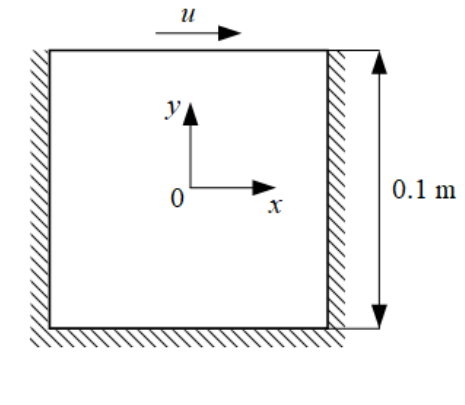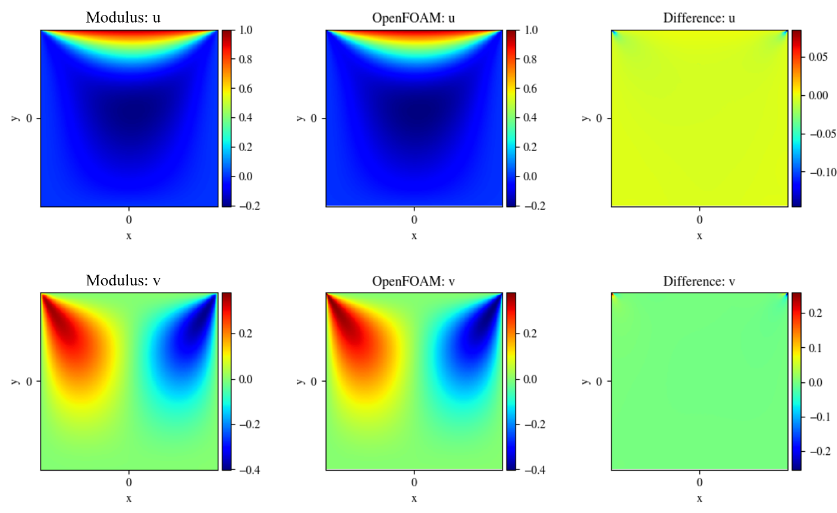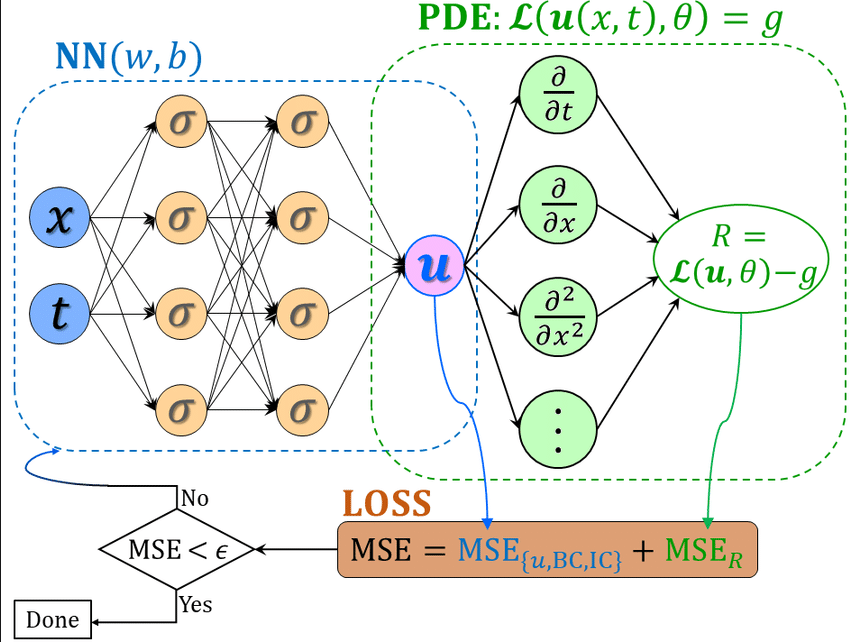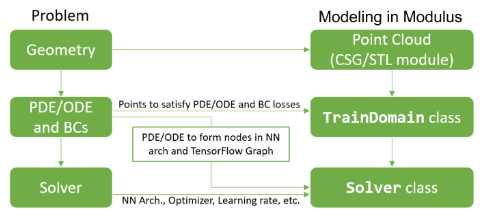The lid-driven cavity is a popular problem within the field of computational fluid dynamics (CFD) for validating computational methods. In this repository, we will walk through the process of generating a 2D flow simulation for the Lid Driven Cavity (LDC) flow using Nvidia Modulus framework.
The lid-driven cavity is a well-known benchmark problem for viscous incompressible fluid flow [75]. The geometry at stake is shown in Figure 27. We are dealing with a square cavity consisting of three rigid walls with no-slip conditions and a lid moving with a tangential x-direction velocity of 1m/s. The Reynolds number based on the cavity height is chosen be 10.
We are interested on velocities (x-direction: u, y-direction: v) of fluid when the top wall is moving.
NVIDIA Modulus is a neural network framework that blends the power of physics and partial differential equations (PDEs) with AI to build more robust models for better analysis. This framework trains groundbreaking physics-ML models to turbocharge industrial digital twins, climate science, protein engineering and more. This supports:
- complex geometries
- various algebra equations
- specialize Physics Informed Neural Network Architecture
- parallel gpu computation
- CUDA/tensor core acceleration
- simulation visualization on Paraview
For details please check https://developer.nvidia.com/modulus
- Tensorboard : training records
- Nvidia Index Paraview: ParaView is an open-source, multi-platform data analysis and visualization application. ParaView users can quickly build visualizations to analyze their data using qualitative and quantitative techniques. NVIDIA IndeX™ is integrated in ParaView—one of the most popular visualization tools in High Performance Computation.
For details please check https://www.nvidia.com/en-us/data-center/index-paraview-plugin/
Left: Modulus Prediction, Center: True/Validation Data, Right:Difference (Error)Fully Connected Physics Informed Neural Network (default architecture)
- Raissi, Maziar, Paris Perdikaris, and George Em Karniadakis. "Physics Informed Deep Learning (Part I): Data-driven Solutions of Nonlinear Partial Differential Equations." arXiv preprint arXiv:1711.10561 (2017).
- Raissi, Maziar, Paris Perdikaris, and George Em Karniadakis. "Physics Informed Deep Learning (Part II): Data-driven Discovery of Nonlinear Partial Differential Equations." arXiv preprint arXiv:1711.10566 (2017).
Download Modulus Installation Guide and Container for Linux platform from https://developer.nvidia.com/modulus-downloads
Requirement:
- Ubuntu 18.04 or Linux 4.18 kernel
- NVIDIA GPU based on the following architectures:
- Nvidia Ampere GPU Architecture (A100)
- Volta (V100, Titan V, Quadro GV100)
- Turing (T4, Quadro RTX series)
- Pascal (P100, P40, P4, Titan Xp, Titan X)
- Docker is recommended
- Windows 10 https://www.paraview.org/download/
-
- Geometry setup (Constructive Solid Geometry, CSG or STL)
- Sampling on boundaries and interior regions
- Equation setup (TrainDomain)
- Solver setup (Solver)
python ldc_2d.py --run_mode=plot_data
This should populate the files in thenetwork_checkpoint_ldc_2d/train_domain/data/directory. The different --run_mode available are:
- solve: Default run mode. Trains the neural network.
- plot_data: Plots all the domains without training. Useful for debugging BCs, ICs, visualizing domains,point-clouds, etc. before starting the training.
- •eval: Evaluates all the domains using the last saved training checkpoint. Useful for post-processing whereadditional domains can be added after training is complete.



